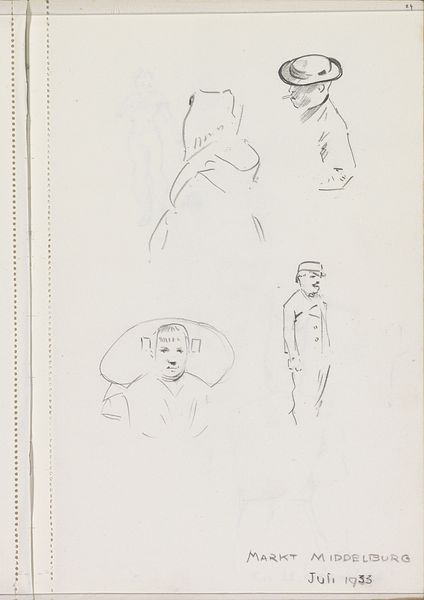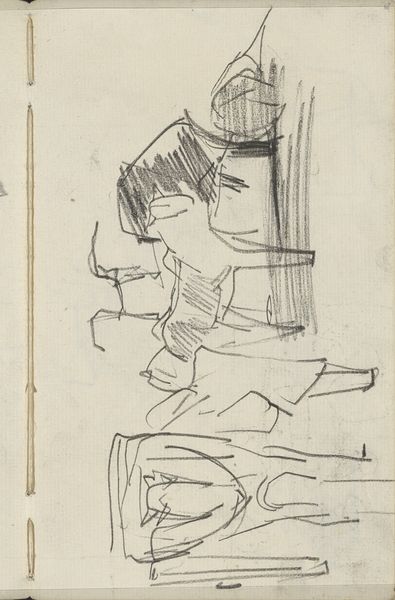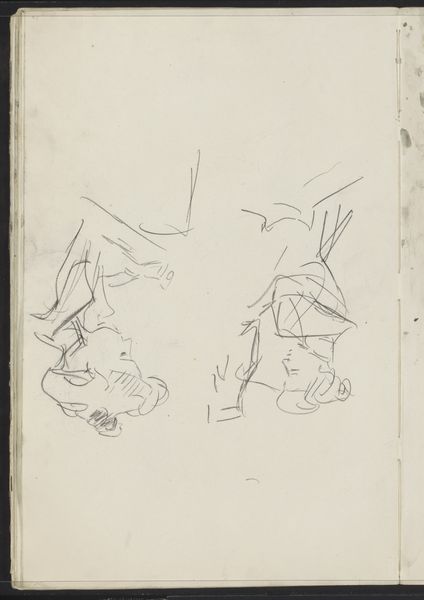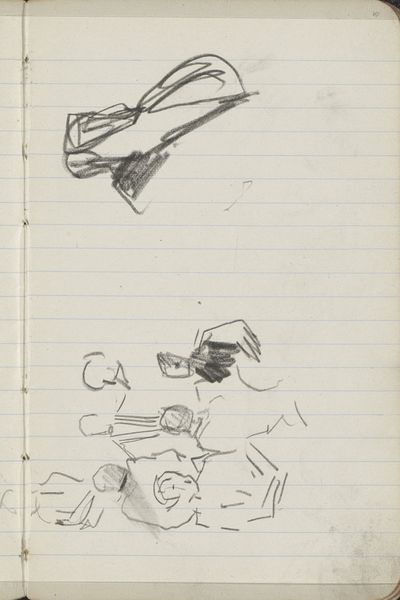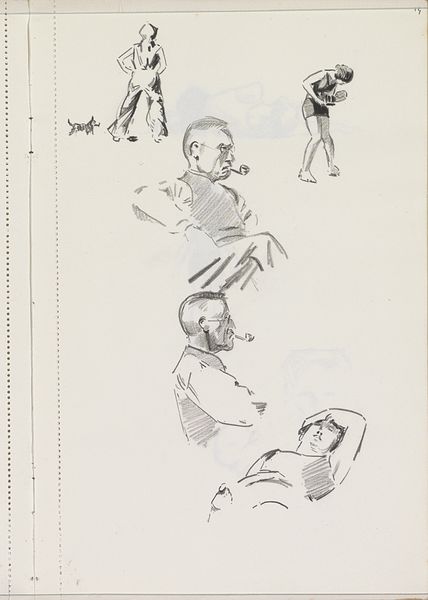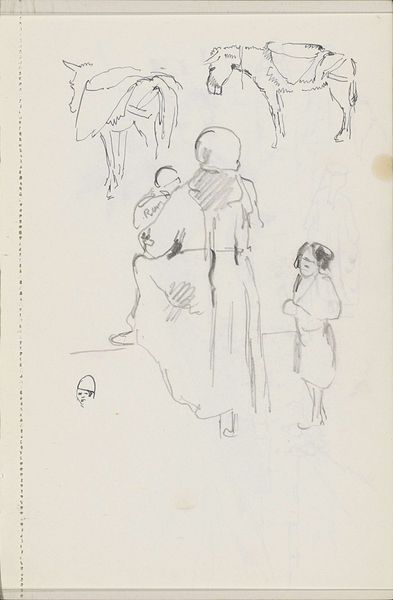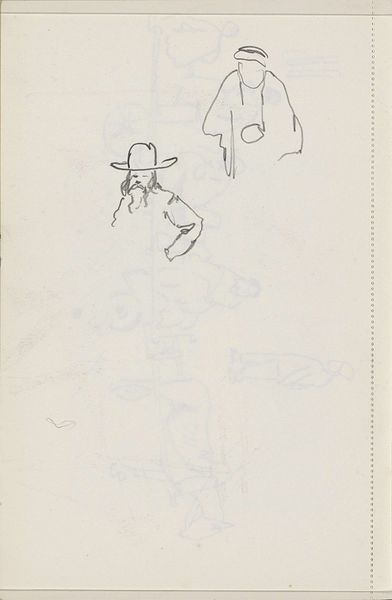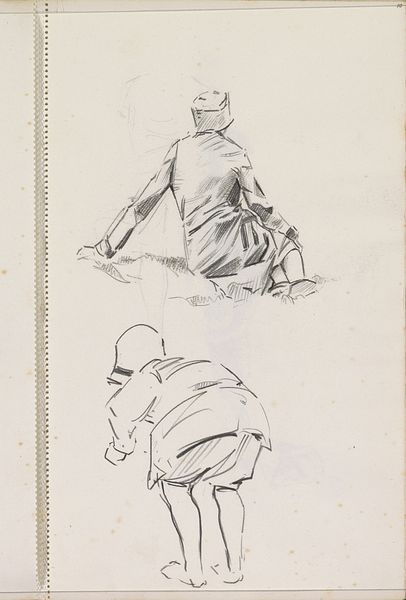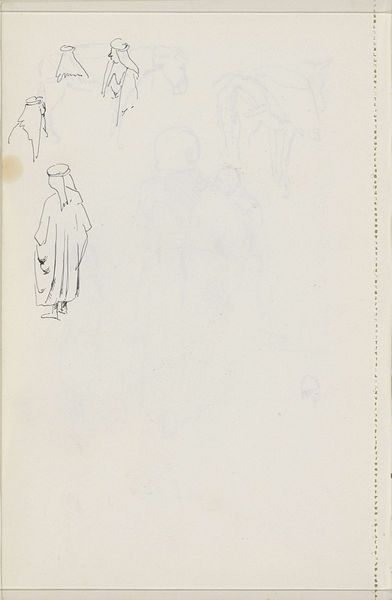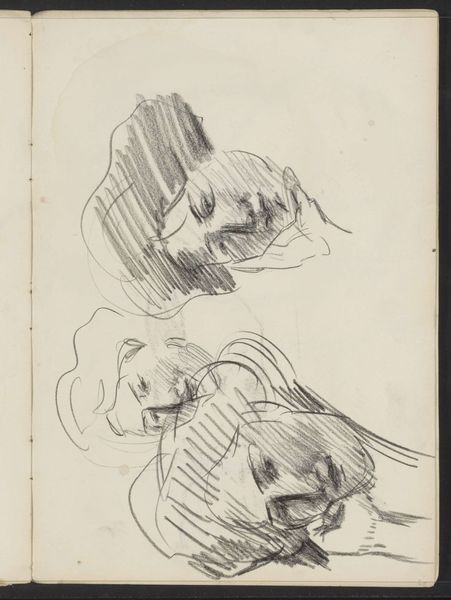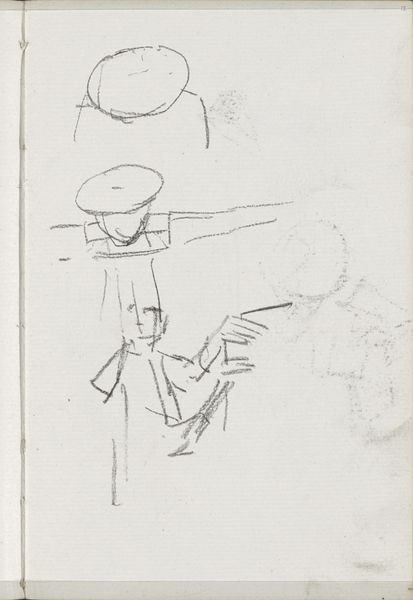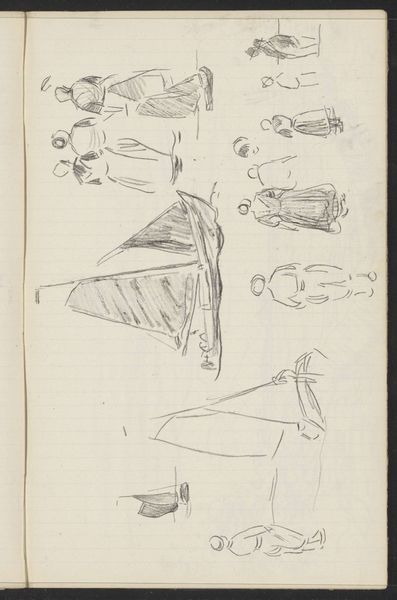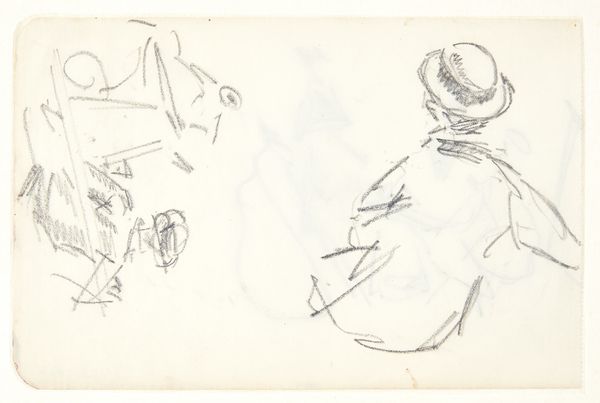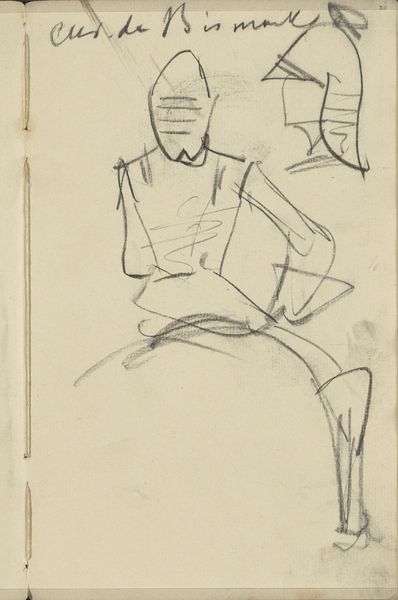
drawing, paper, pencil
#
portrait
#
drawing
#
amateur sketch
#
quirky sketch
#
figuration
#
paper
#
personal sketchbook
#
idea generation sketch
#
sketchwork
#
ink drawing experimentation
#
detailed observational sketch
#
pencil
#
sketchbook drawing
#
genre-painting
#
sketchbook art
#
modernism
#
initial sketch
Copyright: Rijks Museum: Open Domain
Curator: What we're seeing here is a drawing by Otto Verhagen, likely created between 1933 and 1937, titled "Figuren in Zeeuwse klederdracht op de Markt te Middelburg". Editor: My initial impression is one of quiet observation. The pencil strokes are light, tentative even, giving the figures a fleeting presence, almost as if they might vanish. Curator: Right, it does capture a specific moment in time, doesn’t it? Middelburg was a society steeped in tradition, particularly its distinctive regional clothing, which became entwined with regional identity and tourist culture during the interwar years. Verhagen records this cultural demonstration through quick on-site sketching. Editor: And observe the form! Verhagen really emphasizes contour and line; he defines space and volume through a skillful manipulation of light and shadow with a deliberate artistic execution. Note his varying weights of the pencil. Curator: Precisely, he’s less concerned with photographic accuracy. This approach aligns Verhagen’s practice with contemporary debates around folk culture being less “authentic” if overtly staged. These figures, captured in an in-formal setting such as this busy market square, project what could be described as an “everyday authenticity". Editor: Although rough and incomplete, his compositions guide your eyes very directly and precisely through a semiotic language—the contrast to empty space to a heavy marking defines the overall rhythm, if one were to reconstruct them using the same methods. Curator: Good point, by creating these sketches Verhagen is showing interest in preserving and recording everyday culture. It serves as a tangible artifact of an era, representing values attached to visual signifiers like the traditional costume for locals in the area and tourists. Editor: Well, regardless of its function or significance to its culture, there is this interesting conversation it creates among forms in positive and negative spaces. Curator: Yes. It's always rewarding when art allows us to consider aesthetic choices in conjunction with historical realities. Editor: I concur completely! I think these artistic investigations into formal execution makes you think about what Otto must've intended from an aesthetic and subjective point of view.
Comments
No comments
Be the first to comment and join the conversation on the ultimate creative platform.
